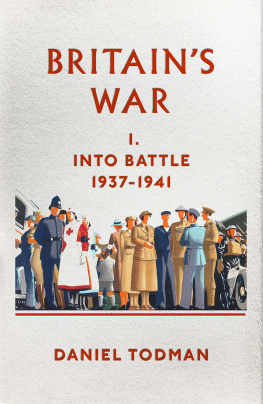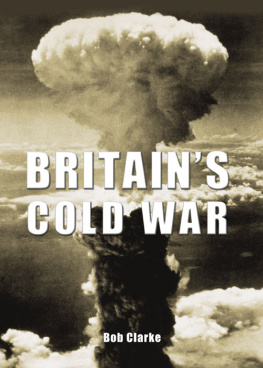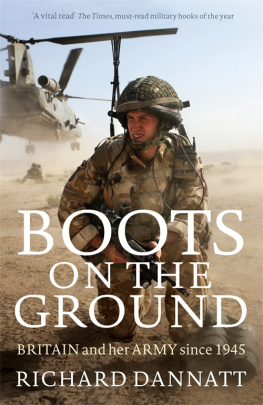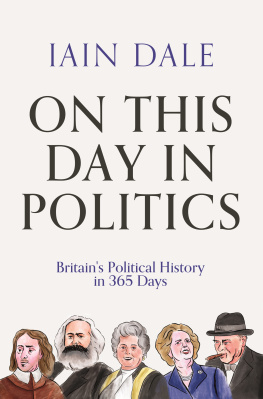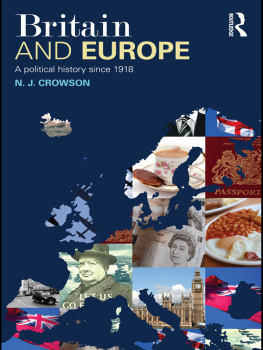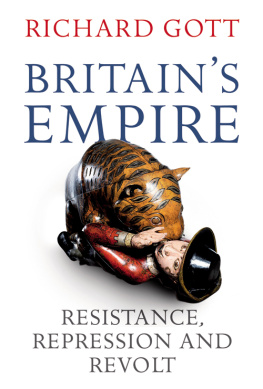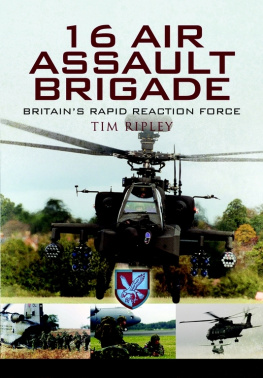Contents
Daniel Todman
BRITAINS WAR
Into Battle, 19371941
ALLEN LANE
UK | USA | Canada | Ireland | Australia
India | New Zealand | South Africa
Allen Lane is part of the Penguin Random House group of companies whose addresses can be found at global.penguinrandomhouse.com.
First published 2016
Copyright Daniel Todman, 2016
Cover illustration: detail from England Expects by Cecil Walter Bacon, 1939 IWM (Art.IWM PST 13959)
Cover design: Jim Stoddart
The moral right of the author has been asserted
ISBN: 978-0-241-21700-9
THE BEGINNING
Let the conversation begin
Follow the Penguin Twitter.com@penguinUKbooks
Keep up-to-date with all our stories YouTube.com/penguinbooks
Pin Penguin Books to your Pinterest
Like Penguin Books on Facebook.com/penguinbooks
Listen to Penguin at SoundCloud.com/penguin-books
Find out more about the author and
discover more stories like this at Penguin.co.uk
For Alex and Agatha
List of Illustrations
List of Maps
List of Tables
A Note on Money, Weights and Measures and Military Formations
MONEY
For the whole period covered by this book, the UK system of money was based on pounds (), shillings (s.) and pence (d.). Twelve pence equalled one shilling, and twenty shillings equalled a pound.
The sums of money referred to here are always those of the time unless otherwise noted, they are not adjusted into constant terms to take account of inflation. There are several ways of translating these sums to put them into the context of the early twenty-first century. Which one is best to use depends on the context.
In terms of household income and consumption, for example, 1 in 1937 bought goods and services worth 56.30 at 2013 prices. Since, however, most peoples earnings and standards of living were relatively much lower in the 1930s than they are eight decades later it would be misleading to see an annual income of 250 as the equivalent of 14,080 which is the value of goods that such an income would have purchased in 2013. In terms of social status, earning 250 a year in 1937 was worth about 61,330 in 2013 money. Its important to bear in mind that during the war, both inflation and working-class earnings increased very rapidly. By 1941, the value of what you could buy with 1 had fallen to 42.24 in 2013 terms, and an annual income of 250 was the equivalent to earning 38,540 in 2013.
A lot of the expenditures discussed in this book are those of the state, rather than of individuals. To get a sense of their significance in historical context, its better to consider these in terms of their relative share of overall economic output. This rose significantly after the outbreak of war. To get a sense of government expenditure in contemporary terms, multiply figures from the late 1930s by 350, and those from 194041 by 250 or 200.
Readers who want to compute what any amount they find in this book is worth, using these measures and others, should make use of the wonderful calculator at the website www.measuringworth.com/ukcompare.
WEIGHTS AND MEASURES
Weights are given in ounces (oz), pounds (lb), and tons; 16oz = 1lb, 14lb = 1 stone, 112lb = 1 hundredweight, 2,240lb = 1 ton. To convert to metric, 2.2lbs = 1 kg, 1,016kg = 1 ton.
Lengths are given in inches, feet, yards and miles; 12 inches = 1 foot, 3 feet = 1 yard, 1,760 yards = 1 mile. Area is given in square footage and acres; 640 acres = 1 square mile. To convert to metric, 1.61km = 1 mile.
Ship sizes are given in gross tons: a measurement of the total volume of all the internal enclosed spaces of a ship calculated on the basis one gross ton = 100 cubic feet. This is a different way of calculating ship size to the deadweight tonnage, which is the number of tons of 2,240lb that a ship can carry at its summer loading level. Ship movements through ports are given in net tons, which are defined as gross tonnage minus space not used for cargo.
MILITARY FORMATIONS
Unit strengths and organizations varied during the war, but to get a sense of the numbers involved when British military formations are discussed, it can be taken that at full strength in 194041:
- An infantry division = about 18,000 soldiers
- An armoured division = 250 tanks
- A squadron = 1216 operational aircraft, plus 4 or more in reserve
Figures for divisions, squadrons or warships conceal a large number of base troops who were required to keep the complex machinery of war
Introduction: War Stories
Tucked at the back of my desk drawer, in an old hearing-aid box, are the medals that could have belonged to my grandfather. The War and Defence Medals and the 193945 and France and Germany Stars were the sort awarded for service, rather than valour and they match the three years that Charles Todman spent driving tanks and trucks in the UK before, transferred to a machine-gun battalion, he was sent out to North-west Europe at the start of September 1944. Their metal shines and their ribbons are unfaded. These are medals that have never been worn.
For most of the time that I knew him, Grandad showed no sign of thinking of himself as a veteran. He never went to the Royal British Legion, or belonged to a regimental association, or went to ceremonies on Remembrance Sunday. As a child, I was not regaled with his war stories. Only with reluctance could he be persuaded to name the guns wielded by my Airfix plastic soldiers, and when the film A Bridge Too Far made one of its frequent appearances on television, my grandmother, Nanny, told me to turn it off because it was too noisy. The medals he had actually received for his wartime service had been lost: given to his sons to play with, they had disappeared into the cracks that had opened up in the sun-baked garden of their Metroland house one summer in the 1950s. That seemed to sum up how he had decided to treat the war. Judging by the pictures they kept on their walls, he and Nanny were much keener on celebrating their post-retirement holidays, their grandsons, and the awards given to their home-made wine than on marking their participation in the Second World War.
Yet the war had been the defining moment of their lives. How else would a trainee accountant from London and a miners daughter from Tyneside ever have met, if military service hadnt brought them both to a dance in the sergeants mess at the army camp at Barnard Castle? They first met when he picked her up after she fell on the floor, but in their wedding photos, Grandad in his uniform looks like the one who might be about to topple over. Her father had drunk him and his mates under the table the night before. Husband and wife obviously made good use of the last moments before he was sent to Europe, because their first child, my father, was born exactly nine months after his embarkation leave, at the start of May 1945. The Russians were in Berlin, the war in Europe was in its final days, and the midwife insisted that the boy would have to be called Victor to mark the occasion, thus ensuring that he would spend the rest of his life as a war memorial.

